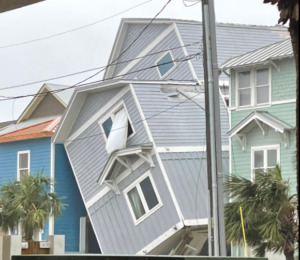After three years of below-normal hurricane activity — and 10 years without a major hurricane (Category 3 or higher) making U.S. landfall — the National Oceanic and Atmospheric Administration is predicting a “near normal” hurricane season in 2016.
Of course, there were two named storms before the official June 1 start to the season: Alex, which formed over the far eastern Atlantic in January; and Bonnie, a tropical storm that brought heavy rain to parts of South Carolina in late May.
With the season apparently off to an early start, and a prediction for more activity in 2016 than in recent past years, is the insurance industry prepared if a major hurricane strikes the United States, or has it grown complacent after enjoying 10 years without a major U.S. hurricane and three years without a significant tropical cyclone (Sandy in 2012)?
From a claims-paying standpoint, there is little doubt that homeowners insurers and commercial property insurers are able to respond in the event of a major catastrophe.
“Insurers are prepared both logistically and financially for whatever Mother Nature has to bring this hurricane season,” declares Insurance Information Institute President Robert Hartwig. “Claims paying capacity is at or near an all-time record high at the primary level, at a record high in terms of reinsurance as well as capital markets capacity through catastrophe bonds and other such instruments — there’s simply no question that, financially, the industry is prepared.”
Hartwig also dismisses the idea that insurers have become complacent regarding hurricane risk.
In a recent interview Best Vice President Jennifer Marshall said insurers have maintained an expectation of catastrophe losses as they have priced their property book, and added national insurers addressed their concentrations in riskier coastal areas earlier in the 2000s. Marshall also said widely available reinsurance, driven in large part by the continuing presence of capital from alternative sources, has allowed insurers to buy more reinsurance coverage or opt for lower attachment points.
Homeowners’ insurers have also been seeing rate increases — although they have been moderating, from 7% in 2013 to 5.4% in 2014 and about 4% in 2015, according to Moody’s.
For commercial property insurers, the opposite has been true for rates. Duncan Ellis, U.S. property practice leader for Marsh, says rates have been decreasing year over year, but generally speaking, the decreases are moderating. Ellis says insurers are indeed “well prepared” to respond to a major catastrophic event, but he does add that, with rates decreasing and attritional losses not abating, insurers are robbing catastrophe premiums to pay for rate decreases.
“I think sometimes you see that in loss ratios,” he says. “Companies operating at an 85% or 90% loss ratio in a non-cat year worries me. One could argue they should be in the high 70s in a non-cat year.”
Luis Gritzo, vice president and research manager at Johnston, Rhode Island-based FM Global, likewise says commercial property insurers are prepared for a major catastrophe in terms of being well capitalized, but he says, “The real question is one of underwriting discipline. When these events hit, that’s when the true colors of this discipline will show.”
Marsh’s Ellis says while insurers seem “a little nervous about pricing,” they are still doing their homework on the underwriting side — making sure they have their modeling done correctly and getting out to look at and assess locations. He also points out that while there is a “sense of worry” about rate levels, the current market is not like the destructive soft market of, say, the late 1990s.
For one, underwriting models are more developed, and the use of analytical tools allow underwriters to drill further down into individual risks than they were able to in the past. Also, he notes that insurers are still trying to achieve an underwriting profit rather than using money on a cash flow basis, where they rely on invested premiums to allow them to operate at an underwriting loss.
The Sunshine State
Florida, of course, is no stranger to property catastrophe risk or the impact a major cat can have on the property insurance market. After Hurricane Andrew in 1992, the market faced disruption as insurers re-evaluated exposures. The homeowners insurance landscape has gone through a series of changes since then, with the state’s intended insurer of last resort, Tallahassee-based Florida Citizens Property Insurance Corp., formed in 2002. It ballooned to represent more than 20% of the market by 2011, according to a recent Fitch Ratings report, “Florida Homeowners Insurance Market Update.”
Since 2011, however, the state has made efforts to manage Florida Citizens’ exposure base through depopulation efforts. The result has been the removal of more than 1.3 million homeowners policies from Florida Citizens, and transitioned to Florida specialist insurers. As of 2015, Florida Citizens’ market share was down to 6%. Florida Citizens’ risk profile has improved considerably, Fitch notes, thanks to low catastrophe losses over the last decade and its risk-reduction efforts.
The story for the Florida specialists that have assumed policies is a bit more unclear, mostly because these companies have yet to be tested by a major catastrophe, Fitch adds.
Jim Auden, managing director at Fitch, says these companies, like Florida Citizens, have done very well in recent years in a loss-free environment. Some of the public companies have grown a lot, although he notes they do not have the capital base that larger national writers have. Auden points out the variation among the Florida specialists: Some have under $50 million in surplus, others have grown to around $400 million to $500 million, and are public with better access to capital should an event occur.
“You wonder, in an event, how they’ll hold up,” he adds.
Still, as both Auden and Hartwig of the Insurance Information Institute note, these carriers have to pass certain tests with the Florida Office of Insurance Regulation in order to take policies out of Florida Citizens. Hartwig says, “I think [the Florida OIR] knows it would be an embarrassment of titanic proportions were they to approve carriers to take out policies only to see them in an event, that can fully be anticipated, then fail.”
The Fitch report notes 5 of the 10 largest direct writers in Florida homeowners business are in the Florida specialist group and are subsidiaries of public holding companies: Universal Insurance Holdings Inc.; Federated National Holding Company; HCI Group Inc.; Heritage Insurance Holdings, Inc.; and United Insurance Holdings Corp.
As far as whether the Florida market can withstand the next big storm, the report says, “The state’s population and coastal property exposure continue to grow at a rapid pace since the most recent landfall in 2005. While the overall Florida market is better prepared to meet obligations that would arise from a large hurricane event, many growing Florida property insurers have brief histories, untested by a large loss event, which creates uncertainty as to how these firms respond to the next inevitable hurricane.”
Fitch continues, “Limiting factors that influence ratings include relatively small size and scale, concentrated product and geographic profiles, heavy reliance on third-party reinsurance and concerns regarding capital adequacy given catastrophe event exposure.”
Adds Fitch’s Auden: “It’s not just having capital left after a storm — do you have enough to stay in business and live to see another day?”
State of the market
All told, the industry is in a strong position to respond to a major catastrophe event in the United States
Hartwig notes insurers did “quite well” in the active hurricane years of 2004 and 2005, “and the ability to model risk is better now, a decade later. The diversification and spread of risk is broader today than a decade ago, in part because of greater use of reinsurance, but also greater use of capital markets.”
Large national insurers have worked to reduce their coastal market concentrations over the past decade, and while coastal market capacity has rebounded, Hartwig says it is more about other private carriers filling voids as the large national carriers pulled back, as opposed to carriers rolling the dice with high concentrations again.
Still, there is plenty of competition for many types of coastal property risks. Professional Insurance Agents of New Jersey President-elect Donald F. LaPenna Jr., of Donald F. LaPenna Associates, in Cranford, N.J., says he sees an aggressive property market for both homeowners’ and small commercial property risks. “There’s more capacity than we’ve ever had before, in all areas, from reinsurance, to cat property, etc. There’s so much more money out there [now].”
LaPenna adds he has seen both new markets coming in to write coastal risks and existing markets increasing their appetite. “In my eyes, they could be blinded,” he says. Catastrophes, he adds, “are going to happen again, as the cycle always turns, and we always seem to be making similar mistakes every cycle.”





